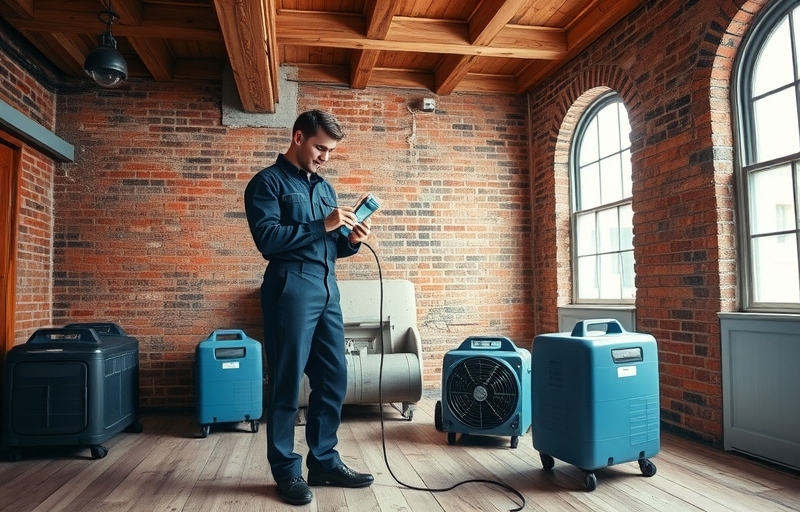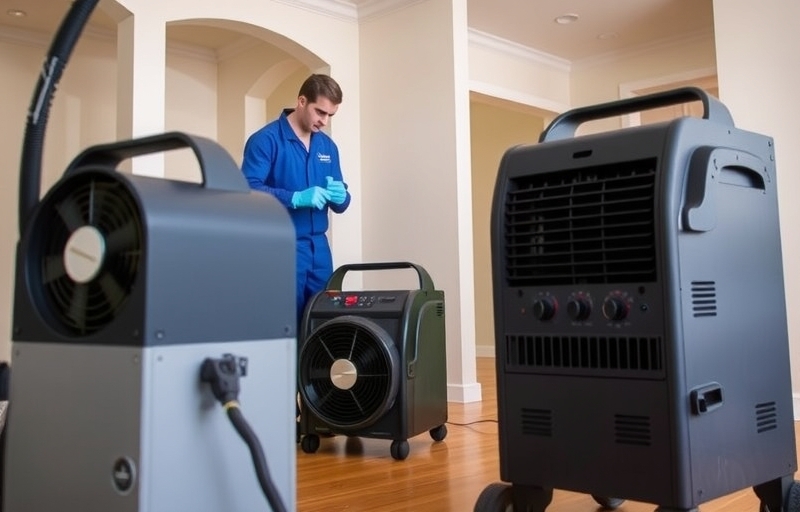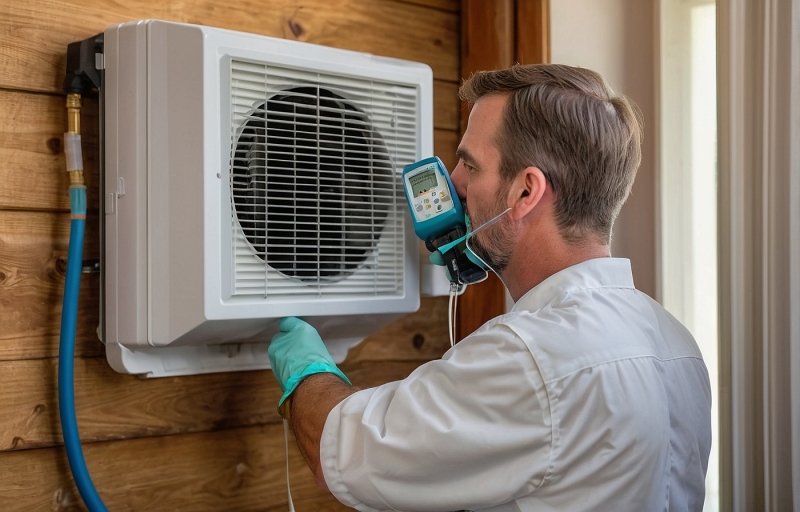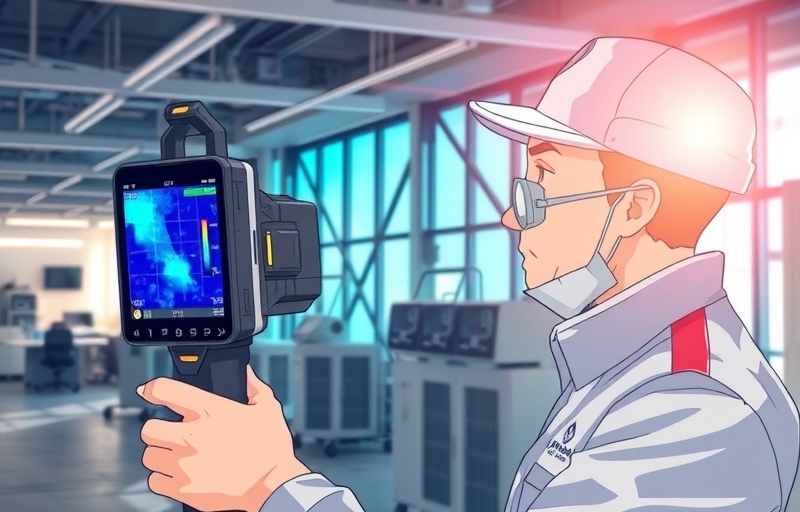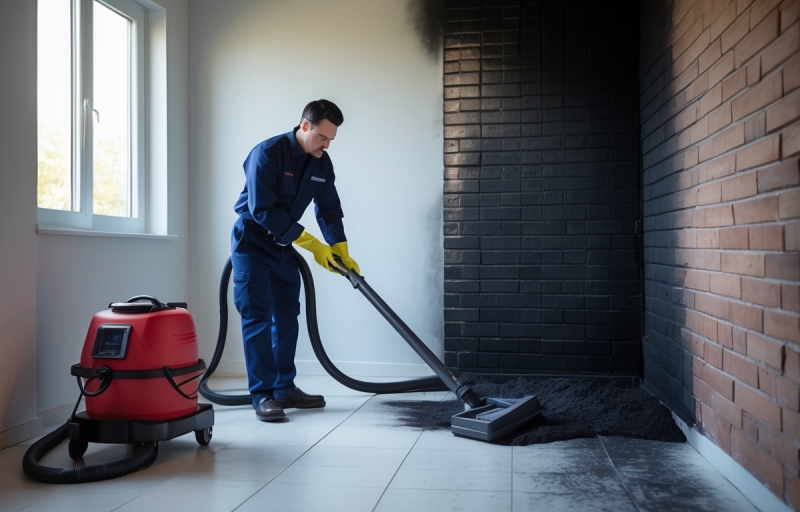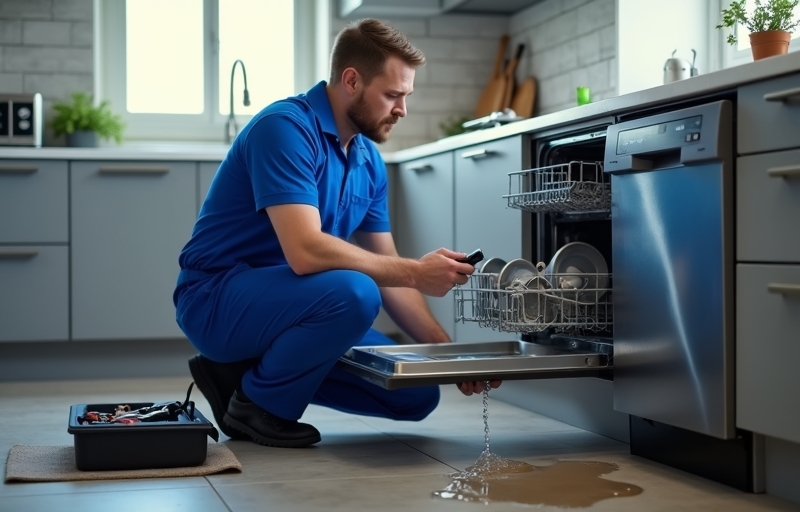Mold growth in office environments is more than just an unsightly nuisance—it poses serious health risks and can significantly impact employee productivity and building integrity. That’s why quick mold remediation in offices is essential. When left untreated, mold can spread rapidly, leading to costly repairs and potential health issues such as allergies, respiratory problems, and skin irritation. At COMMITTED TO QUALITY SERVICE, we understand the urgency of addressing mold problems promptly and professionally. Our team offers fast, friendly, and professional service, ensuring your workplace remains safe and healthy. Whether your mold issue stems from water damage, poor ventilation, or previous fire damage, our expert technicians are equipped with specialized tools to handle the job efficiently. Don’t let mold compromise your office environment—call us now at 855-933-7935 for immediate assistance. We specialize in water damage restoration, fire damage recovery, and comprehensive mold remediation services to restore your office to its optimal condition.
Understanding Mold Growth in Office Environments
Mold growth in office environments is a common yet often overlooked issue that can significantly impact employee health, productivity, and the structural integrity of a building. Mold thrives in damp, humid conditions, making office spaces with poor ventilation, hidden water leaks, or high humidity levels particularly vulnerable. Understanding how and why mold develops in these settings is crucial for implementing timely and effective remediation strategies.
Mold is a type of fungus that reproduces through microscopic spores. These spores are present in both indoor and outdoor air and can settle on virtually any surface. When moisture is introduced—whether from a leaky roof, burst pipe, or condensation from HVAC systems—these spores can begin to grow and spread rapidly. According to the Environmental Protection Agency (EPA), mold can begin to grow within 24 to 48 hours of moisture exposure, emphasizing the need for swift action.
Office buildings, especially older ones, often contain hidden areas where moisture can accumulate unnoticed. These include behind walls, under carpets, above ceiling tiles, and within HVAC systems. Once mold establishes itself in these areas, it can be difficult to detect until it has already caused significant damage or health issues. Common signs of mold in office environments include a musty odor, visible discoloration on walls or ceilings, and increased allergy-like symptoms among employees.
"Mold exposure can cause a variety of health effects, particularly in individuals with respiratory conditions, allergies, or weakened immune systems," notes the Centers for Disease Control and Prevention (CDC). "Symptoms may include nasal stuffiness, throat irritation, coughing or wheezing, eye irritation, or, in some cases, skin irritation."
The presence of mold in the workplace can lead to a range of health complaints, from minor irritations to serious respiratory conditions. This not only affects employee well-being but can also result in increased sick days, reduced productivity, and potential legal liabilities for employers. In severe cases, mold infestations can even render parts of the office uninhabitable, leading to costly repairs and operational disruptions.
Several factors contribute to mold growth in office environments:
- Water Intrusion: Leaks from roofs, windows, or plumbing systems are primary sources of moisture that can lead to mold growth.
- Poor Ventilation: Inadequate airflow can cause humidity to build up, especially in areas like restrooms, kitchens, and storage rooms.
- HVAC Issues: Malfunctioning or poorly maintained HVAC systems can distribute mold spores throughout the building.
- High Humidity: Offices located in humid climates or without proper dehumidification systems are more susceptible to mold problems.
- Neglected Maintenance: Failure to address minor leaks or moisture issues promptly can escalate into significant mold infestations.
To prevent mold growth, it is essential to maintain a clean and dry office environment. Regular inspections, especially in moisture-prone areas, can help identify potential issues before they become serious. Installing dehumidifiers, ensuring proper ventilation, and promptly repairing leaks are all effective preventive measures. Additionally, educating staff about the signs of mold and encouraging them to report any concerns can help catch problems early.
For businesses that suspect or confirm mold presence, professional remediation is critical. Attempting to clean mold without proper training and equipment can exacerbate the problem and pose health risks. Certified mold remediation specialists use advanced techniques and tools to safely remove mold and address the underlying moisture issues to prevent recurrence.
The importance of quick mold remediation cannot be overstated. Delaying action not only increases the extent of the damage but also raises the cost of repairs and the risk to occupant health. According to a study by the Occupational Safety and Health Administration (OSHA), indoor air quality issues, including mold, are among the top five environmental risks to public health.
"Timely mold remediation is not just about aesthetics or odor control; it is a critical component of workplace safety and operational continuity," states a report from the National Institute for Occupational Safety and Health (NIOSH).
Employers have a legal and ethical responsibility to provide a safe working environment. Ignoring mold issues can lead to violations of health and safety regulations, potential lawsuits, and damage to the company’s reputation. By investing in proactive mold prevention and rapid remediation, businesses can protect their employees, assets, and bottom line.
For those seeking professional assistance, it is advisable to consult with experienced restoration companies that specialize in mold remediation. At Projekt Restoration, we offer comprehensive services tailored to address mold issues in commercial settings. Our team is trained to identify hidden mold, assess the extent of contamination, and implement effective remediation strategies.
In addition to mold remediation, we also provide support for related issues such as water damage and fire damage restoration. These services are crucial because water damage often precedes mold growth, and fire suppression efforts can introduce excess moisture into a building.
To learn more about our approach and commitment to quality, visit our about page or explore our gallery to see examples of our work. For frequently asked questions, our FAQ section provides valuable insights into our processes and what clients can expect.
For further reading and resources on mold in office environments, consider the following:
- EPA Mold Resources – Comprehensive information on mold prevention and remediation.
- CDC Mold Information – Health effects and guidelines for mold exposure.
- OSHA Mold Guidelines – Workplace safety standards related to mold.
In conclusion, understanding the conditions that lead to mold growth in office environments is the first step toward effective prevention and remediation. By recognizing the signs early and acting swiftly, businesses can avoid the costly consequences of mold infestations. Whether through routine maintenance, employee education, or professional remediation services, a proactive approach is key to maintaining a healthy and productive workplace.
Common Causes of Mold in Commercial Buildings
Mold growth in commercial buildings, particularly in office environments, is a common yet often overlooked issue that can lead to serious health and structural problems if not addressed promptly. Understanding the root causes of mold is essential for effective prevention and timely remediation. One of the primary causes of mold in office buildings is excess moisture, which can result from a variety of sources. Leaky roofs, broken pipes, and malfunctioning HVAC systems are among the most frequent culprits. These issues often go unnoticed in large commercial spaces, allowing moisture to accumulate behind walls, under carpets, or in ceiling tiles, creating the perfect environment for mold spores to thrive. Poor ventilation also contributes significantly to mold development. Inadequate airflow can trap humidity indoors, especially in areas like basements, storage rooms, or restrooms, where moisture levels are naturally higher. When air circulation is limited, condensation can form on surfaces, further encouraging mold growth.
Another common cause is water intrusion from external sources. Heavy rainfall, flooding, or even minor seepage through foundation cracks can introduce moisture into a building. If not dried out quickly and thoroughly, these damp conditions can lead to mold within 24 to 48 hours. In many cases, the problem is exacerbated by delayed maintenance or lack of routine inspections. Commercial buildings often have complex infrastructures, and without regular checks, small issues can escalate into major mold infestations. Additionally, construction defects such as improper sealing, poor insulation, or the use of moisture-retaining materials can also contribute to mold problems. These defects may not be immediately visible but can create long-term vulnerabilities in the building’s structure.
Office buildings that have experienced previous water damage are particularly susceptible to mold. Even if the initial damage appears to be repaired, residual moisture can remain trapped in walls, floors, or ceilings. Without proper drying and dehumidification, this hidden moisture becomes a breeding ground for mold. Furthermore, businesses that have undergone fire incidents may also face mold issues during the restoration process. Water used to extinguish fires can seep into building materials, and if not properly dried, mold can develop as a secondary problem. This is why comprehensive restoration services are crucial after any fire or water-related incident.
Human behavior and operational practices within the office can also influence mold growth. For instance, overwatering indoor plants, improper storage of cleaning supplies, or neglecting to clean up spills promptly can all contribute to increased indoor humidity levels. Additionally, the use of humidifiers without proper monitoring can raise moisture levels beyond safe limits. In some cases, even the layout and design of the office space can play a role. Areas with limited natural light and airflow are more prone to mold, especially if they are used for storage or left unoccupied for extended periods.
To mitigate these risks, it is essential for property managers and business owners to implement proactive maintenance and monitoring strategies. Regular inspections, prompt repairs, and the use of moisture-resistant materials can significantly reduce the likelihood of mold growth. Investing in professional services for mold assessment and remediation is also a wise decision, especially in high-risk areas. Companies like Projekt Restoration offer specialized expertise in identifying and addressing mold issues before they become severe. By understanding the common causes of mold in commercial buildings, businesses can take the necessary steps to protect their employees’ health, preserve their property, and maintain a safe and productive work environment. For more information on how to safeguard your office space, visit our about page to learn about our experience and commitment to quality restoration solutions.
Health Risks Associated with Office Mold Exposure
Mold growth in office environments is more than just an aesthetic concern—it poses serious health risks to employees, clients, and anyone who spends extended periods in the affected space. When mold spores become airborne, they can be inhaled, leading to a variety of health issues that range from mild allergic reactions to severe respiratory problems. Individuals with pre-existing conditions such as asthma, allergies, or compromised immune systems are particularly vulnerable. Common symptoms of mold exposure include coughing, sneezing, nasal congestion, skin irritation, and eye discomfort. In more severe cases, prolonged exposure can lead to chronic respiratory illnesses, sinus infections, and even neurological symptoms such as headaches, memory loss, and fatigue. The workplace, being a shared environment, amplifies the risk as mold spores can easily spread through HVAC systems, contaminating multiple areas and affecting a larger number of people.
The presence of mold in an office can also contribute to what is commonly referred to as Sick Building Syndrome, a condition where occupants experience acute health and comfort effects that appear to be linked directly to time spent in the building. This can lead to increased absenteeism, reduced productivity, and a general decline in employee morale. Moreover, the psychological impact of working in a mold-infested environment should not be underestimated. Employees may experience stress and anxiety knowing that their health is at risk, which can further exacerbate physical symptoms and reduce overall workplace satisfaction.
In addition to affecting human health, mold can also compromise the structural integrity of office buildings. Mold thrives in damp, humid conditions, often resulting from hidden leaks or water damage. If left untreated, it can deteriorate walls, ceilings, carpets, and furniture, leading to costly repairs and potential business disruptions. This makes it crucial for property managers and business owners to act swiftly at the first sign of mold. Early intervention not only protects the health of building occupants but also preserves the physical assets of the business. For more information on how to detect early signs of moisture issues, you can explore our guide on how to identify hidden water damage early.
Another often overlooked aspect is the legal and regulatory implications of mold in the workplace. Employers have a duty of care to provide a safe and healthy working environment. Failure to address mold issues promptly can result in legal liabilities, including workers’ compensation claims and potential lawsuits. Regulatory bodies such as OSHA may also impose fines or sanctions if mold-related health hazards are found during inspections. Therefore, investing in professional mold remediation is not just a health imperative but also a legal safeguard.
Professional mold remediation services are essential for effectively eliminating mold and preventing its recurrence. These services typically include a thorough inspection, identification of moisture sources, containment of affected areas, removal of contaminated materials, and application of antimicrobial treatments. To understand more about what these services entail, you can visit our services page. Choosing a qualified remediation company ensures that the job is done correctly and in compliance with industry standards, thereby minimizing health risks and restoring a safe office environment.
It is also important to educate employees about the signs of mold and encourage them to report any suspicious odors or visible growth. Regular maintenance checks and prompt attention to water leaks can go a long way in preventing mold infestations. Business owners should consider implementing a proactive mold management plan that includes routine inspections and moisture control strategies. For insights into our approach and values, feel free to learn more about our mission and commitment to creating healthier indoor environments.
In conclusion, the health risks associated with mold exposure in office settings are significant and multifaceted. From respiratory ailments and allergic reactions to psychological stress and legal consequences, the impact of mold is far-reaching. Quick and effective mold remediation is not just a reactive measure but a proactive strategy to ensure the well-being of employees and the longevity of the business. By recognizing the dangers early and taking decisive action, office managers can create a safer, healthier, and more productive work environment for everyone.
How Mold Affects Employee Productivity and Morale
Mold growth in office environments can have a profound impact on employee productivity and morale, often in ways that are not immediately visible. When mold is present, it releases spores into the air that can trigger a range of health issues, including respiratory problems, allergic reactions, headaches, and fatigue. These symptoms can lead to increased absenteeism, as employees may need to take time off to recover or seek medical attention. Even when employees are physically present, their performance can suffer due to discomfort, lack of focus, or persistent health issues caused by prolonged exposure to mold. This decline in productivity can affect overall business operations, leading to missed deadlines, reduced efficiency, and lower output. Moreover, the presence of mold can create a negative perception of the workplace environment. Employees may feel that their health and well-being are not being prioritized, which can lead to decreased job satisfaction and morale. A workplace that appears neglected or unsafe can foster a sense of distrust and disengagement among staff, potentially increasing turnover rates. Addressing mold issues promptly through professional remediation not only protects the physical health of employees but also demonstrates a commitment to maintaining a safe and supportive work environment. This proactive approach can enhance employee confidence and loyalty, contributing to a more motivated and productive workforce. For businesses seeking to understand the broader implications of mold and how to address it effectively, exploring our services and reading through our informative blog can provide valuable insights and guidance.
The Financial Impact of Delayed Mold Remediation
Delaying mold remediation in office environments can lead to significant financial consequences that extend far beyond the cost of the initial cleanup. When mold is not addressed promptly, it continues to grow and spread, often infiltrating walls, ceilings, HVAC systems, and flooring. This unchecked growth can result in extensive structural damage, requiring costly repairs or even full replacements of affected materials. The longer mold is allowed to thrive, the more expensive the remediation process becomes, as larger areas must be treated and more intensive methods employed. Additionally, mold can compromise the integrity of office equipment, furniture, and important documents, leading to further financial losses. Beyond physical damage, businesses may face operational disruptions. Employees working in mold-infested environments are at risk of health issues such as respiratory problems, allergies, and skin irritation, which can increase absenteeism and reduce productivity. In severe cases, companies may be forced to temporarily close their offices, leading to lost revenue and potential damage to client relationships. Moreover, if employees or clients become ill due to mold exposure, businesses could face legal liabilities and increased insurance premiums. Investing in timely mold remediation is not just a matter of maintaining a healthy workspace but also a strategic financial decision that protects the long-term viability of the business. Companies can benefit from understanding the full scope of mold-related risks by exploring resources such as the services offered by professional restoration teams and reviewing their mission to ensure quality and timely interventions. Taking proactive steps to address mold issues early can prevent escalating costs and safeguard both the physical and financial health of the organization.
Legal and Compliance Issues Related to Mold in Workplaces
When mold is discovered in office environments, it is not just a health hazard but also a significant legal and compliance concern for employers and property managers. Mold infestations can lead to a range of legal liabilities if not addressed promptly and properly. Occupational Safety and Health Administration (OSHA) regulations, along with state and local building codes, require employers to maintain a safe and healthy work environment. Failure to comply with these standards can result in citations, fines, and even lawsuits. Employees exposed to mold may experience respiratory issues, allergic reactions, and other health complications, which can lead to workers’ compensation claims or legal action against the employer for negligence. In some cases, prolonged exposure to mold without proper remediation can be classified as a violation of the Americans with Disabilities Act (ADA), especially if it exacerbates existing health conditions. Furthermore, insurance policies often require timely action to mitigate damage, and delays in mold remediation could result in denied claims. Businesses must also consider the implications of mold on property value and lease agreements. Tenants may have the right to withhold rent or terminate leases if mold makes the premises uninhabitable. To avoid these risks, it is essential for businesses to implement a proactive mold management strategy that includes regular inspections, prompt remediation, and thorough documentation. Partnering with a professional restoration company that understands the legal landscape can help ensure compliance and protect the organization from potential liabilities. For more information on how professional services can assist in maintaining a compliant and safe workplace, visit our services page. You can also learn more about our company’s values and commitment to safety on our our mission page. Taking immediate action not only safeguards employee health but also shields your business from costly legal consequences.
Signs Your Office May Have a Mold Problem
Detecting mold in an office environment can be challenging, especially when the signs are subtle or mistaken for other issues. However, recognizing the early indicators of a mold problem is crucial for maintaining a healthy and productive workspace. One of the most common signs is a persistent musty or earthy odor, particularly in areas with poor ventilation or high humidity. This smell often lingers even after cleaning and may intensify after rain or when the HVAC system is running. Another red flag is the appearance of visible mold growth, which can present as black, green, or white spots on walls, ceilings, carpets, or around windows. These patches may seem minor at first but can quickly spread if not addressed promptly.
Employees frequently experiencing unexplained health symptoms can also signal a mold issue. Common complaints include headaches, nasal congestion, coughing, sneezing, skin irritation, and eye discomfort. These symptoms often improve when individuals are away from the office, only to return when they come back, indicating a possible environmental trigger. In more severe cases, mold exposure can exacerbate asthma or other respiratory conditions, making it essential to investigate any recurring health concerns among staff.
Water damage is another strong indicator of potential mold growth. Stains on ceilings or walls, warped flooring, or peeling paint can all result from hidden moisture problems. Mold thrives in damp environments, so any recent leaks, flooding, or high humidity levels should be taken seriously. If your office has experienced any form of water intrusion, it is wise to inspect for mold even if there are no visible signs. For more information on how moisture can lead to mold, visit our page on water damage.
Discoloration or bubbling of paint and wallpaper can also point to mold growing behind surfaces. These visual cues often indicate that moisture has seeped into the walls, creating an ideal breeding ground for mold spores. Similarly, if you notice that the HVAC system emits a musty smell or if there is visible mold around vents, it could mean that mold has infiltrated the ductwork, spreading spores throughout the office.
Another often overlooked sign is an increase in employee sick days or a general decline in workplace morale. When people do not feel well in their work environment, productivity and job satisfaction can suffer. Mold-related illnesses can be mistaken for seasonal allergies or common colds, making it difficult to pinpoint the true cause without professional evaluation. If your team is frequently unwell or complaining about the air quality, it may be time to consider a mold inspection.
It is also important to pay attention to areas that are prone to moisture, such as kitchens, bathrooms, and basements. These spaces often harbor mold due to the presence of water and limited airflow. Regular maintenance and inspections in these areas can help catch mold problems early. Additionally, if your office is located in a region with high humidity or has experienced recent weather events like heavy rain or flooding, the risk of mold increases significantly.
If you suspect mold in your office, it is essential to act quickly. Delaying remediation can lead to more extensive damage and higher repair costs. Professional mold remediation services can accurately assess the situation and implement effective solutions to eliminate the problem. Learn more about our comprehensive services designed to restore your office environment to a safe and healthy state.
Understanding the signs of mold and addressing them promptly not only protects the health of your employees but also preserves the structural integrity of your office space. Mold can weaken building materials over time, leading to costly repairs and potential safety hazards. By staying vigilant and proactive, you can ensure a clean, safe, and productive workplace for everyone. For more insights into our approach and values, visit our mission page to see how we prioritize health and safety in every project we undertake.
The Role of Professional Mold Inspection Services
Professional mold inspection services play a critical role in ensuring the health and safety of office environments, especially when it comes to the timely identification and remediation of mold. Mold can develop quickly in commercial spaces due to hidden moisture sources, HVAC system issues, or past water damage incidents. Without expert evaluation, these mold infestations often go unnoticed until they pose serious health risks and structural concerns. Professional inspectors are trained to detect mold even in hidden areas such as behind walls, under flooring, or within ceiling tiles. They use advanced tools like infrared cameras, moisture meters, and air quality testing equipment to accurately assess the extent of contamination. This thorough approach not only identifies visible mold but also uncovers underlying causes, such as leaks or humidity problems, which are crucial to address for long-term prevention.
Moreover, professional mold inspection services provide detailed reports that guide the remediation process. These reports include the type of mold present, the severity of the infestation, and recommended steps for removal and prevention. This information is essential for office managers and property owners to make informed decisions and ensure compliance with health and safety regulations. In many cases, mold inspection is the first step in a comprehensive remediation plan that minimizes disruption to business operations. By identifying the problem early, businesses can avoid costly repairs, potential legal liabilities, and employee health complaints. Additionally, these services help maintain a professional and clean working environment, which is vital for employee productivity and client impressions.
Choosing a reputable company for mold inspection ensures that the process is handled with precision and care. Companies like Projekt Restoration offer a full range of services tailored to commercial properties. Their team of certified professionals understands the unique challenges of office environments and provides customized solutions to meet specific needs. For more information about their approach and expertise, you can visit their about page. They also offer a variety of related services that support mold remediation, including water damage restoration and air quality improvement, which are often necessary after mold is detected.
Incorporating professional mold inspection into regular office maintenance routines is a proactive strategy that protects both the physical structure and the well-being of employees. It ensures that any signs of mold are addressed promptly, reducing the risk of long-term damage and health issues. Furthermore, these inspections can be particularly valuable after events like flooding, plumbing leaks, or HVAC malfunctions, which are common triggers for mold growth. By working with experienced professionals, office managers can ensure that their spaces remain safe, compliant, and conducive to a healthy work environment.
Benefits of Immediate Mold Remediation
Addressing mold issues promptly in office environments offers a wide range of benefits that go beyond just maintaining a clean and professional appearance. Immediate mold remediation is essential for protecting the health of employees, preserving the structural integrity of the building, and ensuring business continuity. Mold can begin to grow within 24 to 48 hours of moisture exposure, making quick action critical. When left untreated, mold spores can spread rapidly through HVAC systems, affecting multiple areas and increasing the scope and cost of remediation. By acting swiftly, businesses can prevent minor mold issues from escalating into major problems that disrupt operations and require extensive repairs.
One of the most significant advantages of immediate mold remediation is the protection of employee health. Mold exposure can lead to a variety of health issues, including respiratory problems, allergic reactions, skin irritation, and even more severe conditions for individuals with compromised immune systems. In an office setting, where people spend a significant portion of their day indoors, poor air quality caused by mold can lead to increased sick days, reduced productivity, and lower employee morale. Quick remediation helps maintain a healthy work environment, which is essential for employee well-being and overall organizational performance.
Another key benefit is the preservation of the building’s infrastructure. Mold thrives in damp environments and can cause extensive damage to walls, ceilings, floors, and even the foundation if not addressed in time. Over time, mold can weaken structural components, leading to costly repairs and potential safety hazards. Immediate remediation helps contain the problem early, minimizing damage and preserving the value of the property. This proactive approach also reduces the likelihood of future mold outbreaks, especially when combined with proper moisture control and regular maintenance.
From a financial perspective, addressing mold issues promptly can lead to significant cost savings. The longer mold is allowed to grow, the more expensive it becomes to remove and repair the affected areas. Early intervention typically involves less invasive procedures and shorter downtime, allowing businesses to continue operations with minimal disruption. Additionally, insurance companies are more likely to cover mold-related claims when the issue is addressed quickly and responsibly. Delayed action, on the other hand, may result in denied claims due to negligence or failure to maintain the property properly.
Immediate mold remediation also helps businesses maintain compliance with health and safety regulations. Many local and federal guidelines require commercial properties to provide a safe and healthy environment for occupants. Failure to address mold issues in a timely manner can lead to violations, fines, and legal liabilities. By taking swift action, businesses demonstrate their commitment to safety and responsibility, which can enhance their reputation and build trust with employees, clients, and stakeholders.
Moreover, quick remediation supports business continuity by minimizing operational disruptions. Mold infestations can lead to temporary closures, relocation of staff, and interruptions in workflow. These disruptions not only affect productivity but can also damage client relationships and revenue streams. By resolving mold issues quickly, businesses can avoid these setbacks and maintain a stable and efficient work environment. This is especially important for industries that rely on consistent operations, such as finance, healthcare, and customer service.
In addition to these practical benefits, immediate mold remediation contributes to a more professional and appealing office space. Mold growth often results in unsightly stains, unpleasant odors, and a general sense of neglect. These issues can negatively impact the perception of clients, partners, and potential employees who visit the office. A clean and well-maintained workspace reflects positively on the organization and supports a culture of excellence and attention to detail.
For businesses seeking expert assistance, professional mold remediation services offer comprehensive solutions tailored to the specific needs of commercial properties. These services include thorough inspections, moisture detection, containment, removal, and preventive measures to ensure long-term protection. Companies like Projekt Restoration provide specialized services designed to address mold issues efficiently and effectively, helping businesses maintain a safe and productive environment.
Understanding the broader context of mold issues is also important. Mold often results from underlying problems such as leaks, poor ventilation, or previous water damage. Identifying and addressing these root causes is essential for preventing recurrence. Resources like the guide on identifying hidden water damage can help property managers and business owners take proactive steps to protect their offices from future mold growth.
In conclusion, the benefits of immediate mold remediation in office settings are extensive and impactful. From safeguarding employee health and preserving property value to ensuring regulatory compliance and supporting business continuity, quick action is essential. By partnering with experienced professionals and staying informed about potential risks, businesses can create a healthier, safer, and more resilient workplace.
Steps Involved in the Mold Remediation Process
Mold remediation in office environments is a critical process that requires a structured and efficient approach to ensure the safety and health of employees, as well as the integrity of the building. The process begins with a thorough inspection and assessment of the affected area. Certified professionals use advanced tools such as moisture meters and infrared cameras to detect mold presence, even in hidden areas like behind walls or under flooring. This step is essential for determining the extent of the infestation and identifying the source of moisture that is fueling mold growth. Once the inspection is complete, a detailed remediation plan is developed, tailored to the specific needs of the office space. This plan outlines the necessary steps, equipment, and safety measures required to effectively eliminate the mold.
The next phase involves containment of the affected area to prevent mold spores from spreading to other parts of the office. This is typically achieved using physical barriers like plastic sheeting and negative air pressure systems. Containment is crucial in office settings where multiple rooms and shared spaces can easily become contaminated. After containment, the actual removal of mold begins. Depending on the severity, this may involve the use of HEPA vacuums, antimicrobial treatments, and in some cases, the removal and replacement of contaminated materials such as drywall, carpeting, or ceiling tiles. During this stage, all materials are handled with care to avoid cross-contamination, and all surfaces are thoroughly cleaned and sanitized.
Once the mold has been removed, the area is dried completely using industrial-grade dehumidifiers and air movers. This step ensures that no residual moisture remains, which could lead to future mold growth. It is also during this phase that the source of the moisture problem, such as a leaky pipe or poor ventilation, is addressed to prevent recurrence. After drying, a final inspection is conducted to verify that the mold has been successfully eradicated and that the area is safe for occupancy. Air quality tests may also be performed to ensure that mold spore levels are within acceptable limits.
Throughout the remediation process, communication with building management and office staff is maintained to minimize disruption and ensure transparency. Documentation is also a key part of the process, providing a record of the work completed and serving as proof for insurance claims or regulatory compliance. For businesses looking to understand more about the comprehensive services offered, visiting the services page can provide valuable insights into the scope of work involved. Additionally, those interested in learning about the company’s values and commitment to quality can explore the our mission section.
In conclusion, the mold remediation process in offices is a multi-step procedure that requires expertise, precision, and a proactive approach. From initial inspection to final clearance, each step is designed to ensure the complete removal of mold and the restoration of a healthy work environment. Acting quickly not only protects the health of employees but also safeguards the structural integrity of the office building, making timely remediation an essential aspect of facility management.
Preventive Measures to Avoid Future Mold Growth
Preventing future mold growth in office environments is essential for maintaining a healthy workspace and avoiding costly remediation efforts down the line. Once mold has been successfully removed, it is crucial to implement a comprehensive strategy that addresses the root causes of mold development. One of the most effective ways to prevent mold is by controlling moisture levels. Mold thrives in damp, humid environments, so maintaining indoor humidity below 60 percent is a key preventive measure. Installing dehumidifiers and ensuring proper ventilation, especially in areas like restrooms, kitchens, and basements, can significantly reduce the risk of mold recurrence. Regular maintenance of HVAC systems is also vital, as these systems can harbor mold spores and distribute them throughout the office if not properly cleaned and serviced.
Another important step is to promptly address any water leaks or spills. Whether it is a leaking roof, a burst pipe, or condensation from air conditioning units, water intrusion should be dealt with immediately. Conducting routine inspections of plumbing systems, ceilings, and walls can help detect early signs of water damage before they escalate into mold problems. For more detailed guidance on identifying potential water issues, you can refer to our resource on how to identify hidden water damage early. Additionally, using mold-resistant building materials during renovations or repairs can provide an added layer of protection. Materials such as mold-resistant drywall, paints, and insulation are designed to inhibit mold growth and are especially useful in moisture-prone areas.
Proper cleaning practices also play a significant role in mold prevention. Regularly cleaning and disinfecting surfaces, especially in high-traffic and high-humidity areas, helps eliminate mold spores before they have a chance to settle and grow. It is also important to ensure that office furniture and equipment are kept dry and well-maintained. Encouraging employees to report any signs of water damage or musty odors can lead to quicker responses and prevent minor issues from becoming major problems. Educating staff about the importance of mold prevention and the steps they can take to contribute to a mold-free environment fosters a proactive office culture.
Incorporating professional inspections and maintenance into your office management routine is another proactive step. Engaging with a trusted restoration company for periodic evaluations can help identify vulnerabilities that may not be visible to the untrained eye. Our team at Projekt Restoration offers a range of services designed to support long-term mold prevention and overall building health. These services include moisture assessments, air quality testing, and preventive maintenance plans tailored to your office’s specific needs.
Moreover, understanding the broader implications of mold growth can reinforce the importance of preventive measures. Mold not only affects the structural integrity of a building but also poses serious health risks to employees, including respiratory issues, allergic reactions, and other long-term health complications. By investing in mold prevention, businesses can protect their workforce, reduce absenteeism, and maintain productivity. For more information about our company’s commitment to creating safe and healthy work environments, visit our about page.
In conclusion, preventing mold growth in office spaces requires a multifaceted approach that includes moisture control, regular maintenance, prompt response to water issues, use of mold-resistant materials, and employee education. By taking these proactive steps, businesses can ensure a healthier, safer, and more productive workplace while avoiding the financial and operational disruptions associated with mold remediation.
Choosing the Right Mold Remediation Company
When dealing with mold issues in office environments, selecting the right mold remediation company is a critical step that can significantly impact the health of employees, the integrity of the building, and the overall productivity of the workplace. A professional and experienced remediation team ensures that mold is not only removed but also that the root cause is identified and addressed to prevent future outbreaks. When choosing a company, it is essential to evaluate their credentials, certifications, and experience in handling commercial properties. Look for companies that are certified by industry-recognized organizations and have a proven track record in office mold remediation. Transparency is another key factor; a reputable company should be willing to explain their process, provide a detailed estimate, and answer any questions you may have. You can learn more about a company’s background and values by visiting their about page, which often outlines their mission, experience, and commitment to quality service. Additionally, reviewing a company’s range of services can help you determine whether they offer comprehensive solutions, including moisture control, air quality testing, and post-remediation verification. It is also beneficial to check if the company provides emergency response services, as quick action is crucial in minimizing mold damage. Reading customer reviews and testimonials can offer insight into the reliability and effectiveness of their work. Furthermore, ensure the company follows industry-standard safety protocols and uses advanced equipment to detect and eliminate mold thoroughly. A trustworthy mold remediation provider will also offer guidance on how to prevent future mold growth, helping you maintain a healthier office environment. By investing time in selecting the right professionals, you safeguard your workplace from the long-term consequences of mold exposure and ensure a swift return to normal operations.
Educating Employees About Mold Awareness
Creating a safe and healthy work environment goes beyond just maintaining clean desks and organized spaces. One of the most overlooked yet critical aspects of workplace safety is mold awareness. Educating employees about mold, its causes, and its potential health effects is a vital step in ensuring quick and effective mold remediation in office settings. When employees are well-informed, they become the first line of defense in identifying early signs of mold growth, which can significantly reduce the risk of widespread contamination and costly damage.
Mold thrives in damp, humid environments and can begin to grow within 24 to 48 hours of water exposure. Leaks, condensation, or high humidity levels in office buildings can create the perfect breeding ground for mold spores. Unfortunately, mold is not always visible. It can grow behind walls, under carpets, or within HVAC systems, making it difficult to detect without proper knowledge. This is why employee education is so crucial. When staff members understand the conditions that lead to mold growth, they can report potential issues such as musty odors, water stains, or persistent allergy-like symptoms, prompting timely inspections and interventions.
Health concerns are among the most compelling reasons to raise mold awareness in the workplace. Mold exposure can lead to a variety of health issues, especially for individuals with allergies, asthma, or weakened immune systems. Symptoms may include coughing, sneezing, skin irritation, headaches, and respiratory problems. In severe cases, prolonged exposure to toxic molds like black mold can result in more serious health complications. By educating employees about these risks, businesses can foster a culture of health consciousness and encourage proactive behavior when it comes to reporting mold-related concerns.
Training sessions, informational posters, and regular communication are effective ways to spread mold awareness among office staff. These educational efforts should cover what mold is, how it spreads, the signs of mold presence, and the importance of immediate reporting. Employees should also be informed about the company’s mold remediation protocols and who to contact if they suspect a problem. This transparency not only empowers employees but also builds trust in the organization’s commitment to their well-being.
Incorporating mold awareness into workplace safety programs can also enhance compliance with health and safety regulations. Occupational Safety and Health Administration (OSHA) guidelines emphasize the importance of maintaining indoor air quality and addressing environmental hazards like mold. By proactively educating employees, companies can demonstrate due diligence and reduce the likelihood of legal liabilities or regulatory penalties.
Moreover, involving employees in mold prevention efforts can lead to more effective outcomes. For instance, staff can be encouraged to keep their work areas dry, report spills immediately, and avoid blocking air vents. Simple habits like these can significantly reduce the risk of mold development. Additionally, employees who understand the importance of mold prevention are more likely to support and cooperate with remediation efforts when necessary, minimizing disruptions to business operations.
To further support mold awareness, businesses can provide access to resources and expert guidance. Partnering with a professional remediation company ensures that employees receive accurate information and that any mold issues are addressed promptly and effectively. Companies like Projekt Restoration offer comprehensive services that include mold inspections, testing, and remediation, tailored to meet the unique needs of office environments. Their team of experts can also assist in developing customized training materials and response plans to enhance workplace preparedness.
In addition to internal education, businesses should also make use of external resources to stay informed about mold-related issues. Visiting the blog section of trusted remediation companies can provide valuable insights, tips, and updates on the latest industry practices. These resources can be shared with employees to reinforce learning and keep mold awareness top of mind.
Ultimately, fostering a culture of mold awareness in the workplace is not just about preventing property damage or avoiding health risks. It is about creating an environment where employees feel safe, informed, and valued. When staff members understand the importance of quick mold remediation and their role in the process, they become active participants in maintaining a healthy office space. This collaborative approach not only enhances the effectiveness of remediation efforts but also contributes to overall employee satisfaction and productivity.
By prioritizing mold education and awareness, businesses can take a proactive stance against one of the most common and potentially harmful indoor environmental issues. It is a small investment that yields significant returns in terms of health, safety, and operational continuity.
Creating a Mold-Free Work Environment for Long-Term Success
Establishing a mold-free work environment is essential for ensuring the long-term health, safety, and productivity of employees in any office setting. Mold growth, often triggered by hidden moisture or water damage, can lead to serious health issues such as respiratory problems, allergic reactions, and chronic fatigue. These health concerns not only affect employee well-being but also contribute to increased absenteeism and reduced workplace efficiency. By prioritizing quick and effective mold remediation, businesses can create a healthier atmosphere that supports sustained performance and employee satisfaction. A proactive approach begins with regular inspections and maintenance, especially in areas prone to moisture accumulation like basements, restrooms, and HVAC systems. Investing in professional mold remediation services ensures that any mold presence is thoroughly addressed, preventing recurrence and further structural damage. Moreover, educating staff about the early signs of mold and encouraging prompt reporting can significantly reduce the risk of widespread contamination. Companies should also consider integrating mold prevention strategies into their overall facility management plans, including proper ventilation, humidity control, and immediate response to any signs of water intrusion. For businesses looking to understand the full scope of mold-related risks and solutions, exploring the range of services offered by experienced restoration professionals can be a valuable step. Additionally, learning how to detect early signs of water damage through resources like the guide on how to identify hidden water damage early can empower office managers to act swiftly before mold becomes a serious issue. Ultimately, maintaining a mold-free office is not just about immediate remediation but about fostering a culture of awareness, prevention, and timely intervention, all of which contribute to a safer and more productive workplace for years to come.
Sure! Here’s a suitable FAQ section for a blog on "The Importance of Quick Mold Remediation in Offices," incorporating relevant information:
Frequently Asked Questions (FAQ)
- Why is mold remediation important in office environments?
Mold remediation is crucial in office settings because mold can negatively impact indoor air quality, employee health, and overall productivity. Prolonged exposure to mold spores may lead to respiratory issues, allergic reactions, and other health problems, which can result in increased sick days and decreased workplace efficiency.
- What causes mold growth in offices?
Mold typically grows in areas with excess moisture, such as around leaky pipes, windows, roofs, or in poorly ventilated spaces. High humidity levels, water damage, and inadequate maintenance can all contribute to mold development in office buildings.
- How can mold affect employee health?
Exposure to mold can cause a range of health issues, including coughing, sneezing, skin irritation, eye irritation, and in severe cases, asthma attacks or other respiratory conditions. Individuals with allergies, asthma, or weakened immune systems are particularly vulnerable.
- What are the signs of mold in an office?
Common signs of mold include a musty odor, visible mold growth on walls or ceilings, water stains, and increased allergy-like symptoms among employees. If these signs are present, it’s important to act quickly to prevent further spread.
- Why is quick mold remediation necessary?
Prompt mold remediation helps prevent the mold from spreading, reduces health risks, and minimizes damage to office property. Delaying remediation can lead to more extensive contamination, higher repair costs, and potential legal liabilities for employers.
- Who is responsible for mold remediation in an office building?
Responsibility typically falls on the property owner or building management. However, employers should report any signs of mold immediately and ensure that proper remediation steps are taken to protect their employees and maintain a safe work environment.
- How can mold be prevented in office spaces?
Preventive measures include maintaining proper ventilation, promptly repairing leaks, using dehumidifiers in humid areas, and conducting regular inspections for signs of water damage or mold growth. Educating staff on reporting potential issues can also help catch problems early.
- Should professional mold remediation services be used?
Yes. Professional mold remediation services have the expertise, equipment, and safety protocols necessary to effectively identify and eliminate mold. Attempting to remove mold without proper training can lead to incomplete removal and further contamination.
- How long does mold remediation take?
The duration of mold remediation depends on the extent of the infestation and the size of the affected area. Minor cases may be resolved in a day or two, while more severe infestations could take several days or longer.
- Can mold return after remediation?
Mold can return if the underlying moisture problem is not addressed. Ensuring that all sources of water intrusion are repaired and maintaining a dry, well-ventilated environment are key to preventing future mold growth.
This FAQ section can help readers understand the urgency and importance of addressing mold issues in office environments promptly and effectively.


